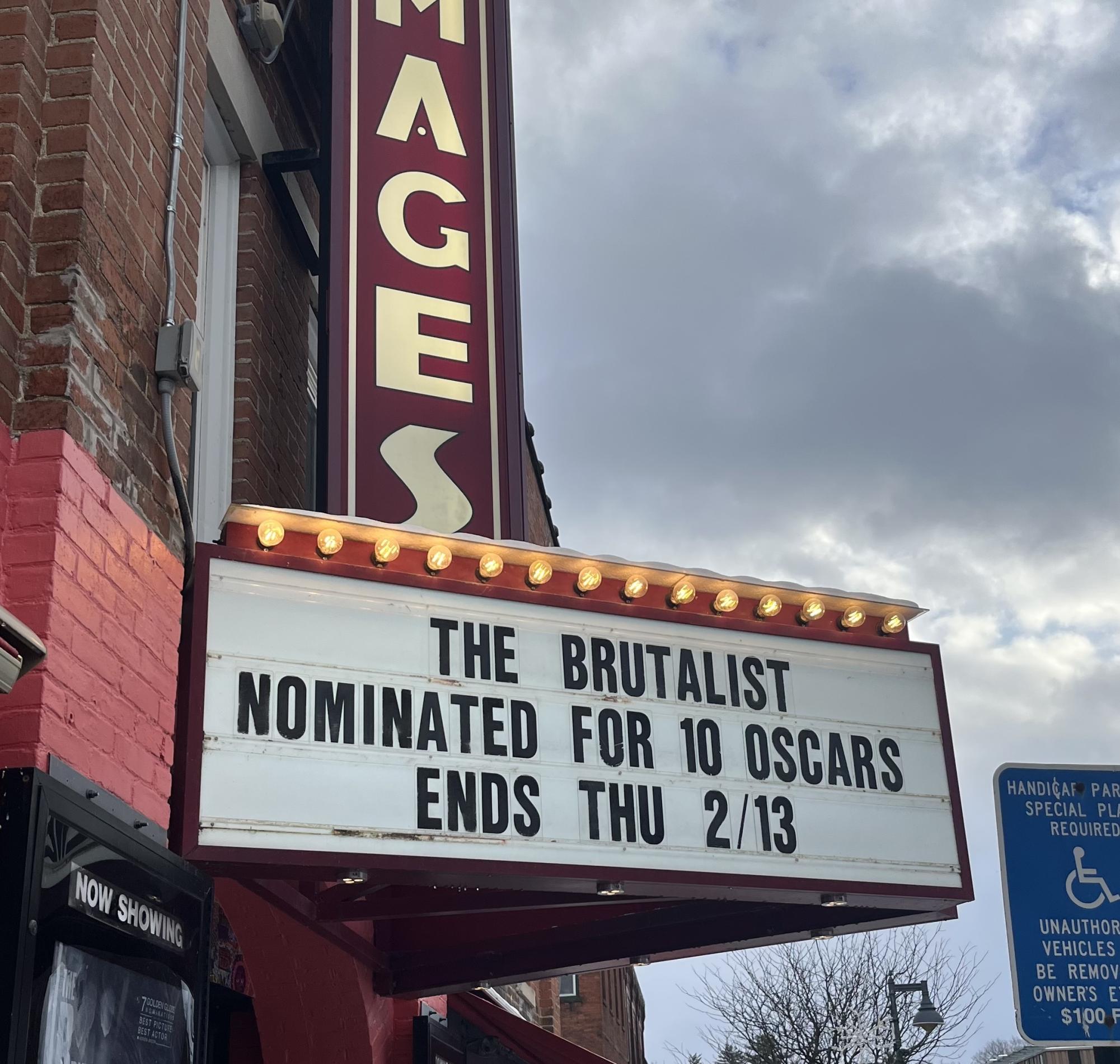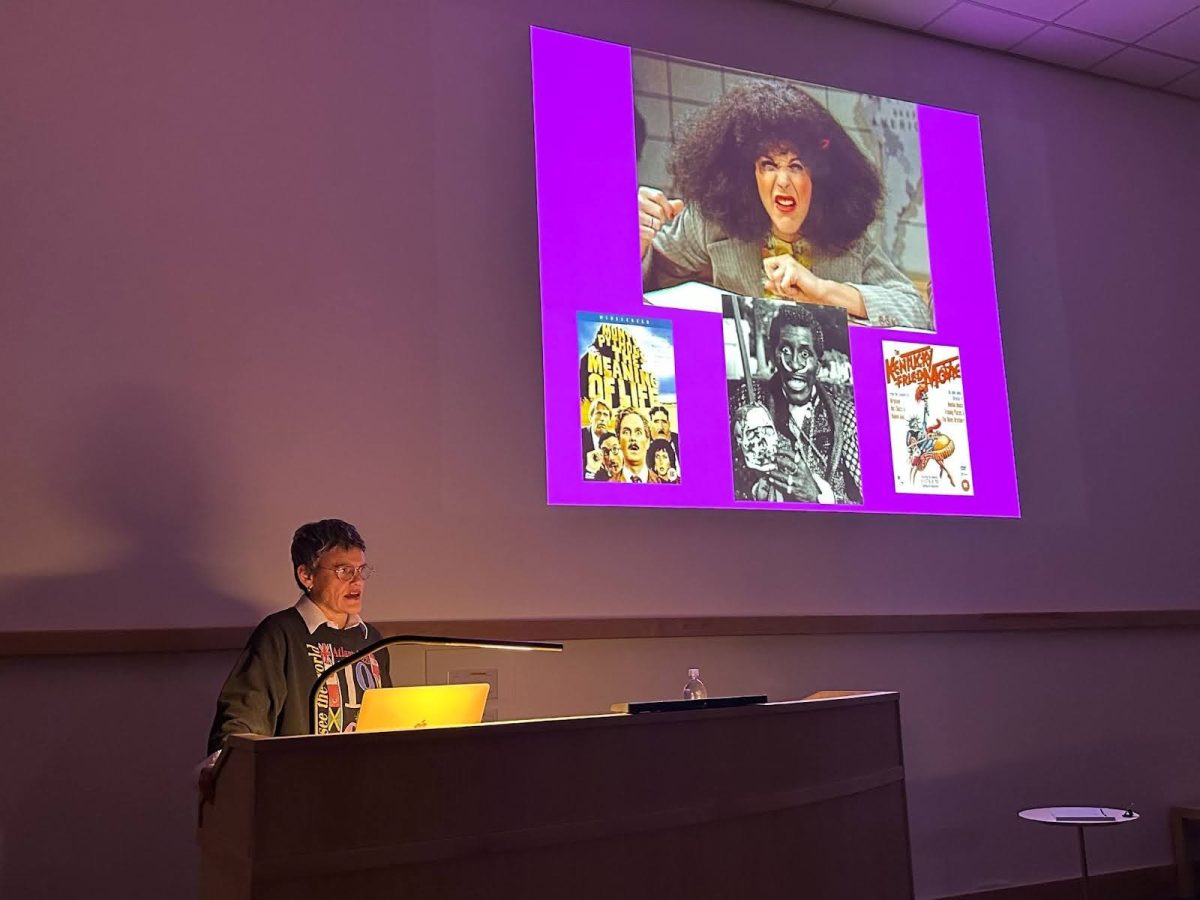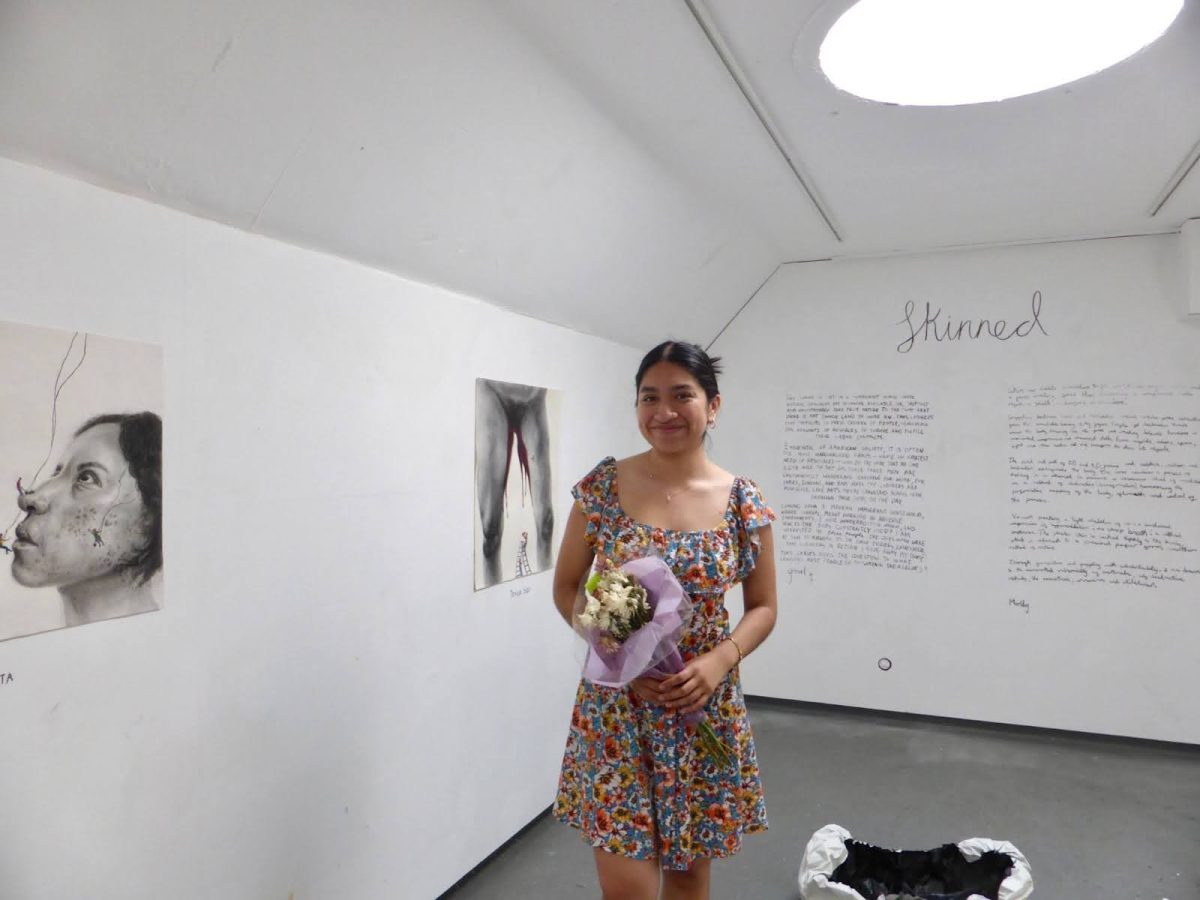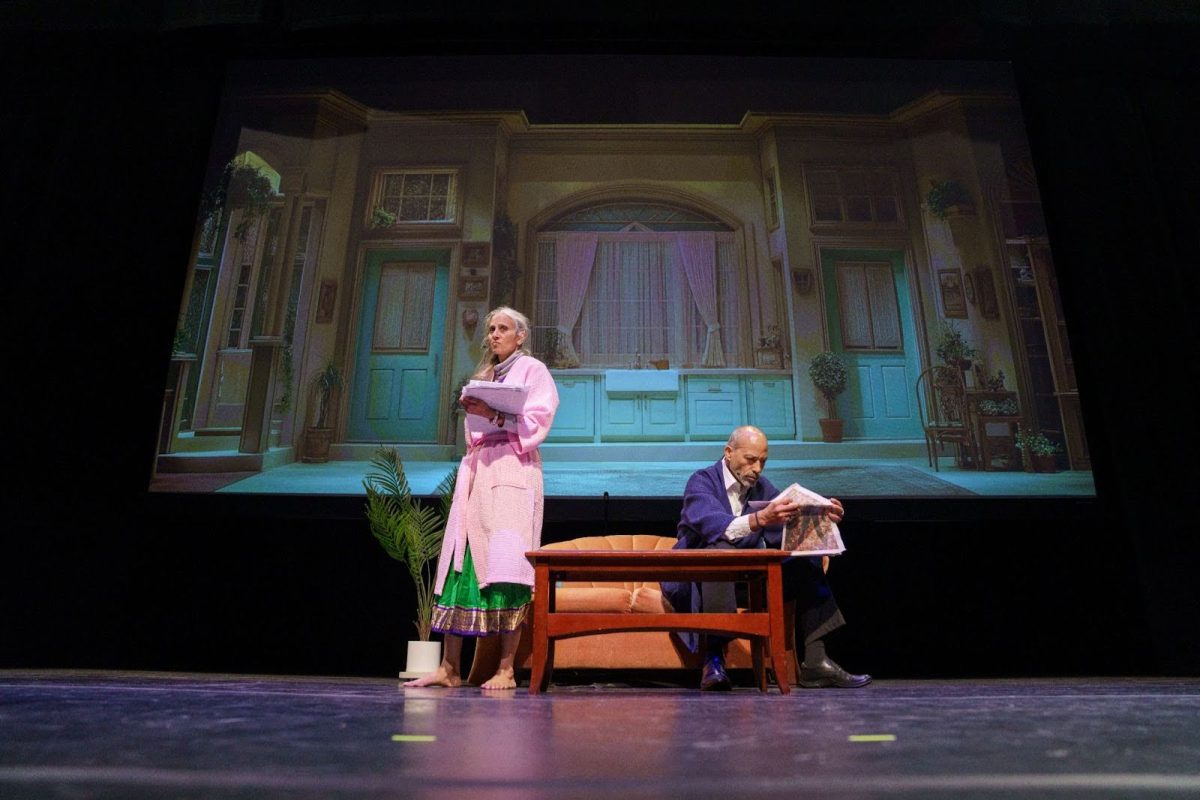
When Adrien Brody appears on screen, his cinema-perfect, shaggy dark hair falling messily over his face as he weaves through the crowded bowels of a steamer ship, one easily recognizes the risqué bombast of A24, the production company responsible for recent pictures Anora, Babygirl, and Queer. Released on Dec. 20, The Brutalist soars above any other film released in the past year. Despite criticisms regarding AI use in post-production, the drama won big at the recent Golden Globes and has accrued 10 Oscar nominations.
Professor of Art Michael J. Lewis, architecture critic and author, met me at Images Cinema last Tuesday for a matinee showing of the film. After a brief introduction and a firm handshake, we entered the theater and got comfortable for the next several hours. The Brutalist demands an entire afternoon with an impressive run-time of three hours and thirty-five minutes.
During the 15 minute intermission, denoted by a gilded on-screen stopwatch, Lewis and I began talking about the scenes we found most compelling. Salient moments included several upside-down, shaky shots of the Statue of Liberty, a loud buzzing party, and the harsh first interaction between the Holocaust-fleeing Hungarian protagonist and the uber-wealthy, all-American patron Harrison Van Buren.
After emerging from four intense hours at the cinema, Lewis and I headed to the art history department in the Williams College Museum of Art building to re-examine our impressions of the movie. Lewis, who attended the premier several months ago, reflected on rewatching the film after acknowledging he didn’t particularly enjoy his first viewing. “Because my expectations were lower, I noticed all these good things,” he said, pointing out the film’s poetic visuals and prominent soundtrack.
Lewis also explained the importance of the titular architectural style. “Brutalism [was] a big architectural movement of the ’50s and ’60s around the world,” he said. “It gets its name from the use of rock concrete, or brute concrete, the French word. But the word [brutalism] is never used in the movie at all.”
The distinctive style of architecture, Lewis said, emerged as a subversive response to suffering. “It was partly after World War II, a shell-shocked world … of threatening violence that required toughness and as if the buildings had to be tough for this new world of ours,” he said. “It didn’t have to be beautiful. In fact, it was almost as if beauty was discredited.”
When walking into a movie titled after one of the best-known architectural movements of the 20th century, one might reasonably expect drafting montages and wide shots of imposing, concrete buildings. Instead, The Brutalist delivers an intimate portrait of a tortured and misunderstood artist attempting to navigate a foreign and unwelcoming country, with explicit shots dotting the film with sexual horror. “So architecture really wasn’t the subject,” Lewis said.
For Lewis, the film uses architecture as a form of Hitchcock’s MacGuffin — the cultured film buff’s word for literary catalyst — to capture the intentional ugliness commonly ascribed to both brutalism and post-war America. As he staggers from loss to love and back again, the movie’s protagonist László Toth is, in Lewis’ words, a “troubled, broken, tubercular man.”
The film is certainly distressing at times, but so is the history it references. Toth’s entrance to American life — navigating prejudice, instability, and the uneven power dynamic between working artist and patron — is, as the title suggests, brutal. But, through it all, Toth continues to create. “The brutalist isn’t the guy who makes brutal architecture. It’s the brutalizing client,” Lewis said.
The Brutalist will be playing at Images Cinema until Feb. 13.







